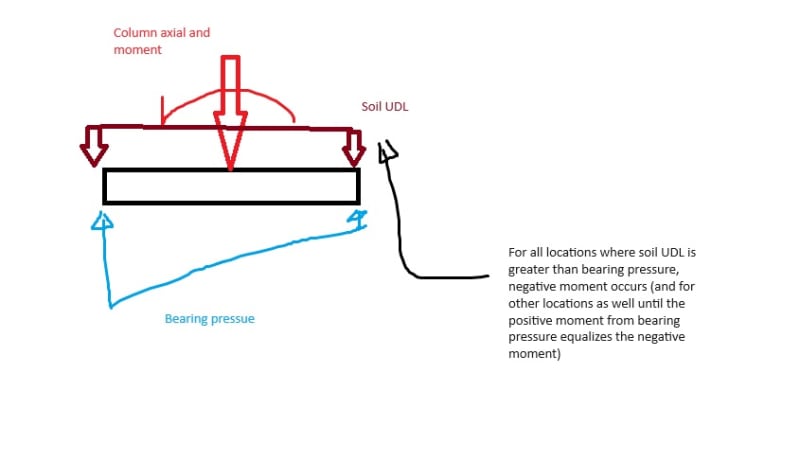EngTipper.
Structural
I have some questions for moments on spread footings:
1- Lets say overturning moment is present, but the dead load (including footing and soil self weights) is large enough such that there is always compression on the soil below the footing for the entire footing area. Putting the net pressure diagram together would clearly show the bottom of the footing always in tension, and therefore top steel is not required. But would top steel be required at all to transfer the moment into the rest of the footing? Or is the assumption to just put the net bearing pressure on the footing all at once sufficient?
2- In the other case, M/S>P/A and one end the footing does not induce downward pressure at one end of the footing (ill call this negative pressure). In this case id only use the actual bearing area of the footing when finding if the bearing capacity is exceeded. In this case, there is a chance that one side of the footing may go into negative flexure (i.e. require top steel) if the negative pressure is large enough relative to the positive pressure on that side of the column.
Is it correct to say that the only time you'd need top steel due to footing moments (not uplift!) is in option 2? And that option 1 will never need top steel if there is never any heel uplift? I know some people in the office who put top steel right when there is any moment, even if M/S<P/A, which I'm thinking is unnecessary.
Cheers!
1- Lets say overturning moment is present, but the dead load (including footing and soil self weights) is large enough such that there is always compression on the soil below the footing for the entire footing area. Putting the net pressure diagram together would clearly show the bottom of the footing always in tension, and therefore top steel is not required. But would top steel be required at all to transfer the moment into the rest of the footing? Or is the assumption to just put the net bearing pressure on the footing all at once sufficient?
2- In the other case, M/S>P/A and one end the footing does not induce downward pressure at one end of the footing (ill call this negative pressure). In this case id only use the actual bearing area of the footing when finding if the bearing capacity is exceeded. In this case, there is a chance that one side of the footing may go into negative flexure (i.e. require top steel) if the negative pressure is large enough relative to the positive pressure on that side of the column.
Is it correct to say that the only time you'd need top steel due to footing moments (not uplift!) is in option 2? And that option 1 will never need top steel if there is never any heel uplift? I know some people in the office who put top steel right when there is any moment, even if M/S<P/A, which I'm thinking is unnecessary.
Cheers!

